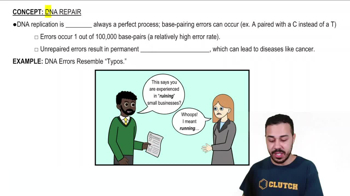Textbook Question
What aspect of DNA structure makes it possible for the proteins of nucleotide excision repair to recognize many different types of DNA damage? (c) the energy differences between correct and incorrect base pairs
1393
views

 Verified step by step guidance
Verified step by step guidance Verified video answer for a similar problem:
Verified video answer for a similar problem:

